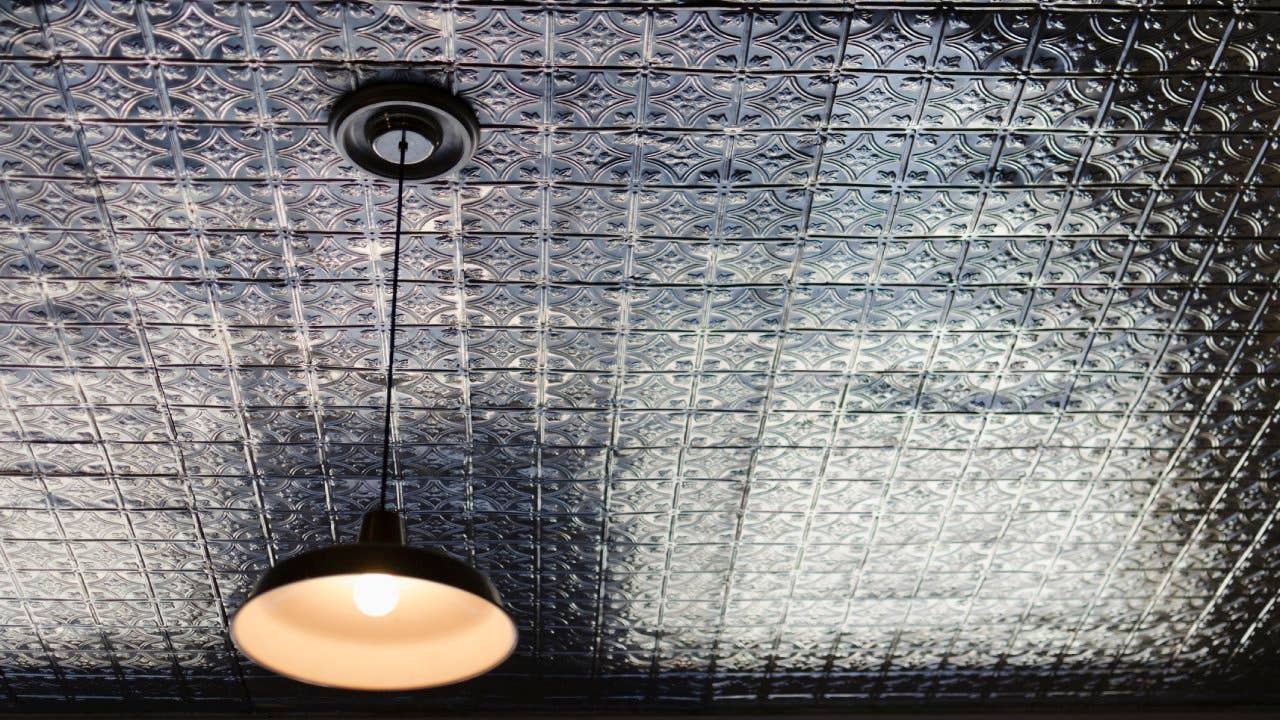Change up your ceiling: 4 ceiling design ideas you can DIY

The Bankrate promise
At Bankrate we strive to help you make smarter financial decisions. While we adhere to strict , this post may contain references to products from our partners. Here's an explanation for .
You’d like to change your home’s ceiling: You’ve heard doing so can transform a room, or maybe you’re just sick of staring at its rattled surface. But a complete, shape-shifting redo of the “fifth wall” isn’t feasible, either for financial or structural reasons.
Fortunately, there are a few ceiling-redesign ideas you can try that do not require an expensive, major overhaul or structural changes. While mainly cosmetic fixes, they can still make a big difference — and can even be DIY projects.
The following four ceiling design ideas may be just what the room needs.
1. Paint your ceiling
One of the simplest improvements you can make to a ceiling is — give it a fresh paint job. Dust, air pollutants and the passage of time itself can make a ceiling dull, stained or yellow.
Just because a ceiling’s called “the fifth wall,” don’t assume it has to be the same color as the other walls: A contrasting or complementary hue can be quite chic. You can certainly go beyond the proverbial white to try a metallic-finish paint, which imparts a sense of luxury. Darker, richer colors enclose the space for a more intimate effect; lighter ones expand it, drawing the eye upwards. You could even try stenciling designs in the corners or other strategic spots.
2. Give the ceiling a trim — and molding
Give the space a polished, finished look by investing in trim and molding. Adding a decorative ceiling medallion to frame a lighting fixture, pendant or chandelier is a simple project. Most medallions are lightweight and can be affixed with construction adhesive to add a rich layer to your ceilings. Plus, it is far cheaper to add a medallion than to tackle a full ceiling overhaul since you can buy a medallion for as little as $20.
If you are willing to try your hand at carpentry and the science of mitre cuts, adding molding along the ceiling edges where the walls meet could give even the most basic tract home or shoebox room a custom-build look. For greater effect, consider integrating LED lighting into the trim to uplight the ceiling for a beautiful glow (in the color of your choice). Molding can get expensive, especially if you enlist a pro to install it, but this artisanal upgrade is bound to improve your home’s appeal.
3. Install ceiling tile
Any room could benefit from ceiling tiles to draw the eye upwards and add some visual interest. When we say ceiling tile, we’re not talking about the putty-colored squares on those floating drop ceilings you find in sterile offices. Rather, we’re referring to a myriad of lightweight but architectural options that add texture and style — and are also ideal to conceal flaws in the ceiling such as cracks, poor mud/plasterwork and other issues.
Regardless of whether your home style is art deco, farmhouse or modern, there is a stick-on tile design for you. Some ceiling tiles are made of tin or copper and cost roughly $4 to $5 per square foot, plus the adhesive — ideal for kitchens and bathrooms. There are also ornately patterned glue-up ceiling tiles made of PVC or other materials that are simple to install.
4. Remove that popcorn ceiling
Removing the old, dingy popcorn ceiling could make a dramatic difference in how modern (not to mention attractive) a room looks.
Removing the popcorn isn’t hard, but it takes patience and elbow grease. It’ll create a mess, so lay plenty of tarps and plastic on the floors and walls before you get started. Once you’re ready to go, use a spray bottle to dampen and soften the popcorn finish. Then, remove the popcorn with a plastic or metal scraper.
Once all the popcorn texture is removed, you may be able to paint the ceiling right away. However, in most cases, a skim coat of plaster may be needed to smooth the surface. You might want to hire a contractor for this aspect of the job: If so, expect to pay them at least $390 or $1.10 to $1.30 per square foot, according to HomeAdvisor. But it might be worth it to save time, and get a perfectly even surface — one of the points of removing the popcorn in the first place.
Related Articles


Making your bathroom modern: Ideas that’ll enhance your enjoyment and your home’s value


What are the different types of ceilings, and what do they cost?